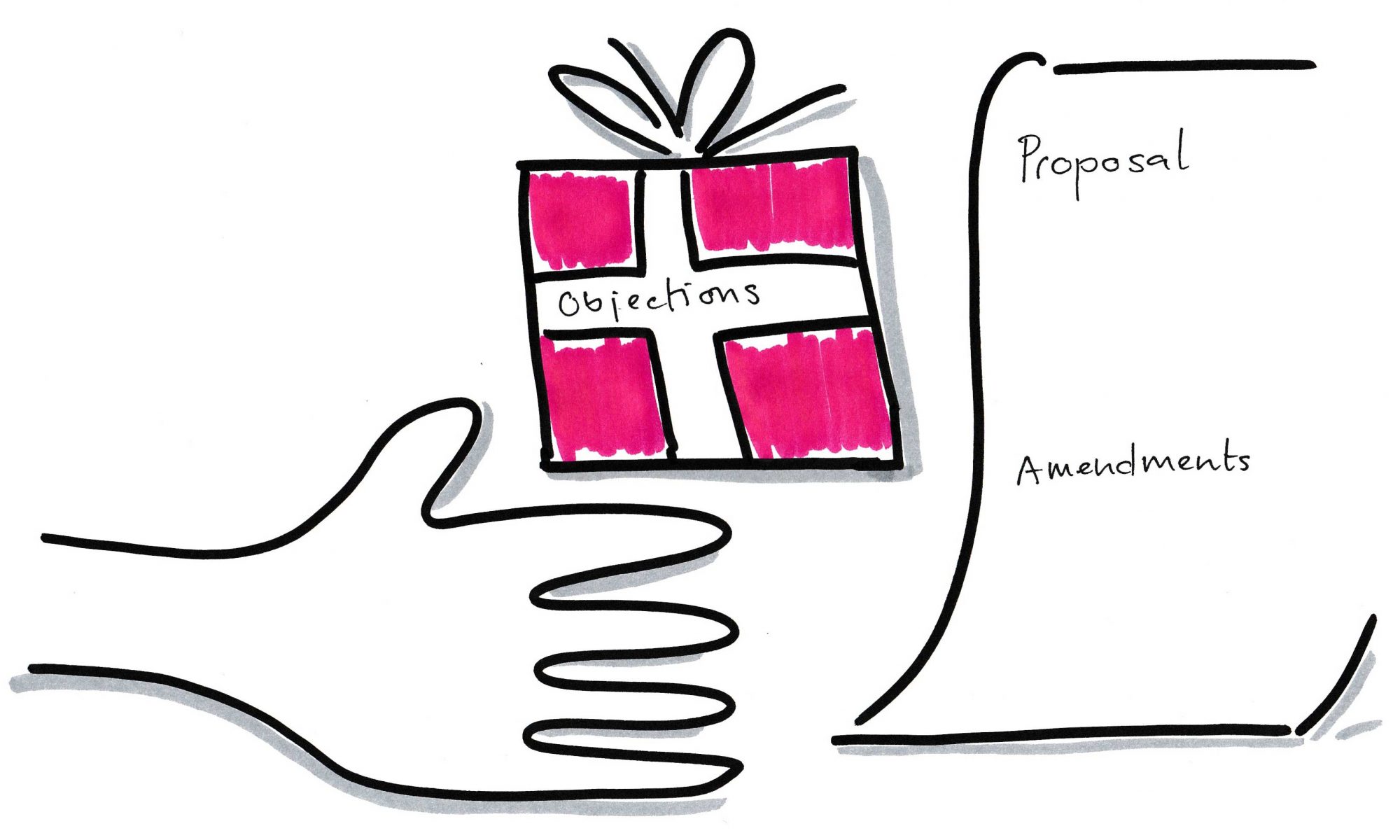In a course on Sociocracy 3.0 (S3) I learnt about the consent decision making. It seems to me that this is a very mighty pattern that could totally change the way we make decisions and even how we come to an understanding. It’s not about democracy and perhaps even more astonishingly it’s not about accurate argumentation, either.
There are some pretty nice patterns in Sociocracy 3.0 that shape our cooperation. One of them is artful participation: „Is my behavior in this moment the greatest contribution I can make to the effectiveness of this collaboration?“ (contributions may include holding back, interrupting, objecting or even breaking agreements). With this in mind you won’t disrupt a process with vanities. Another pattern is „Good enough for now & safe enough to try“ meaning that what we decide now hasn’t to be perfect. It’s a start and we can improve it, based on the experience we are going to make with the trying out.
At the course we played through the pattern of consent decision making. It goes like that:
- consent to driver (collaborating people consent on the cause of a problem)
- present proposal
- clarifying questions?
- brief response (everyone says a view words about how they feel about the proposal)
- any objections?
- resolve objections
- celebrate
- consider concerns
Since there can be objections, there is also a pattern to resolve them:
- listen to objection
- qualify objection
- amend proposal
- any objections to amendment?
- resolve objections to amendment
- any objections to whole proposal?
- celebrate
When we acted out the patterns we immediately got stuck. Two people presented the proposal. I raised an objection. One of the proposal writers raised an objection to my objection. We couldn’t move along and asked for guidance. Our instructor said: „Nobody is completely wrong.“ I first thought she meant that the proposal couldn’t be completely wrong. That was ok by me but still I had my objection that tackled a part of the proposal. But since there was an objection to my objection, I never got to make my point or even present my amendment to the proposal.
The instructor made us do a statement round where everyone could briefly tell the others what they thought was happening. It wasn’t until in this statement round that the other proposal writer told us baffled: „I feel like I have to argue for our proposal.“ That’s when we finally understood what consent decision making in S3 really is about, and we got unstuck. How?
Arguing is what we are used to do. We do it all the time: We derive our conclusions from pros and cons. There are text types for considerations (exposition / Erörterung in German) and (especially in the Anglo-Saxon area) debating challenges. Forget about all that for a moment and focus on artful participation and „good enough for now & safe enough to try“ instead: If no one is completely wrong and everybody practices an artful participation, objections are a gift and we should always consider them. By not objecting to an objection the person with the objection can make their amendment and probably improve the proposal. There is a third very nice pattern I’d like to mention here: „It’s not ‚either, or‘, it’s ‚both and more‘!“
